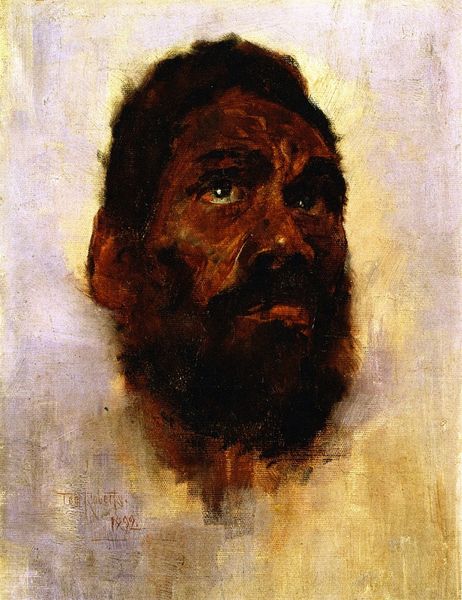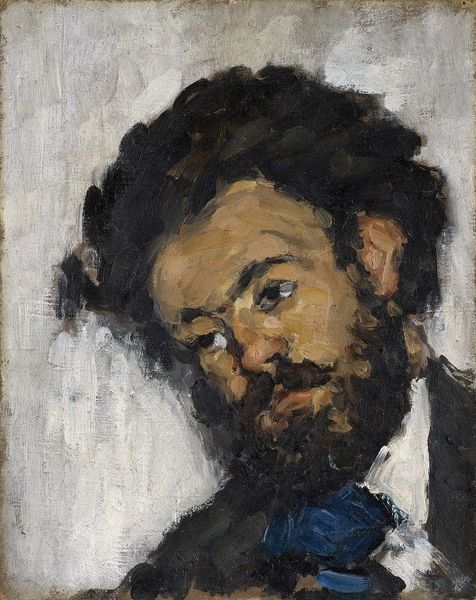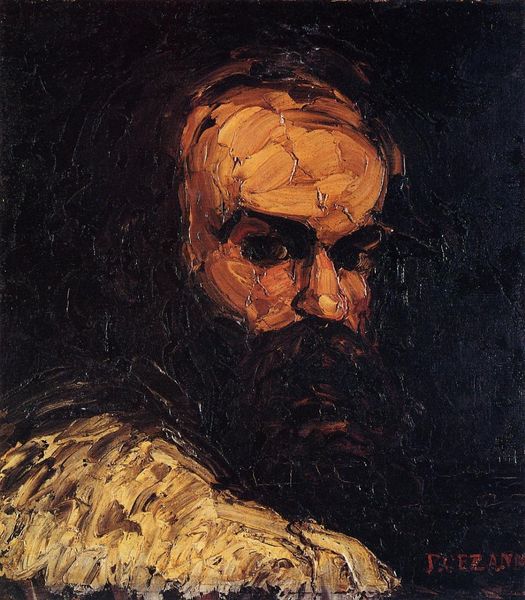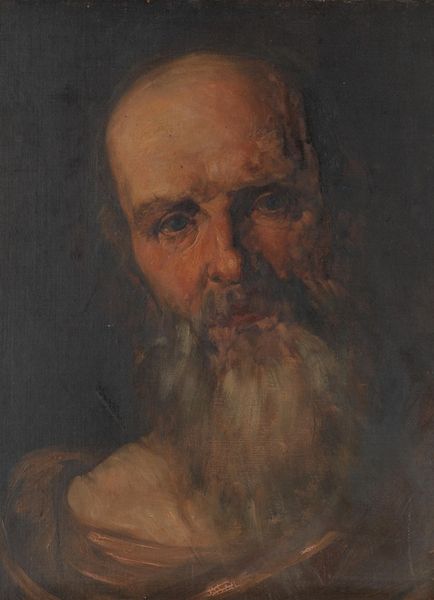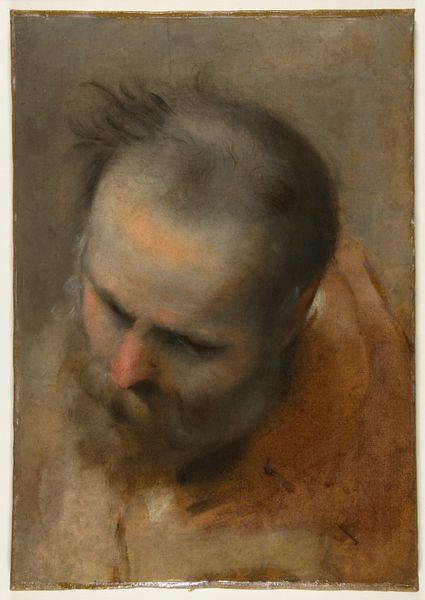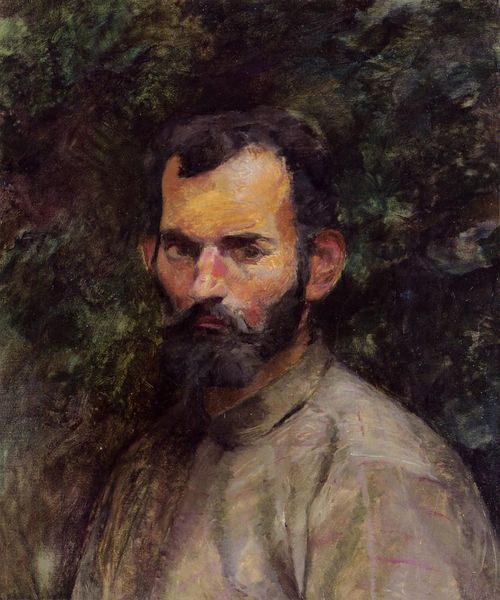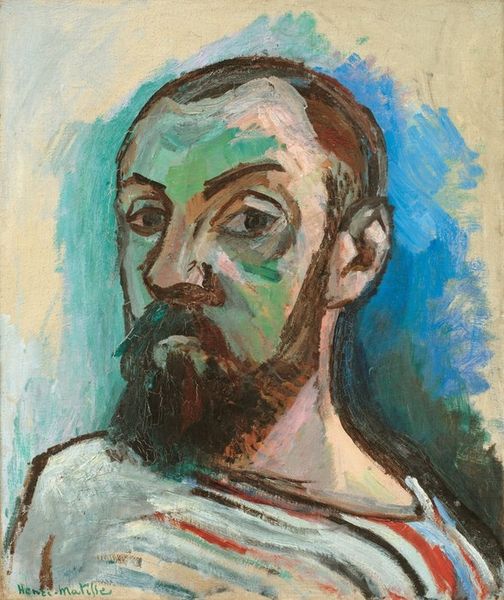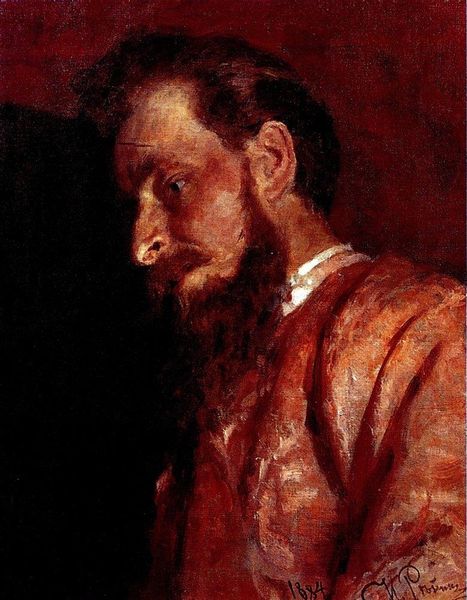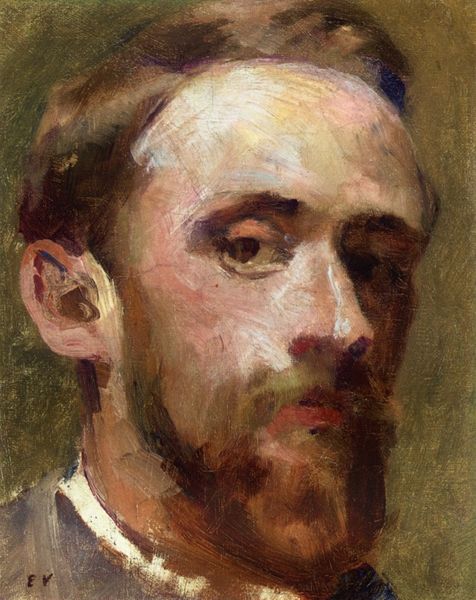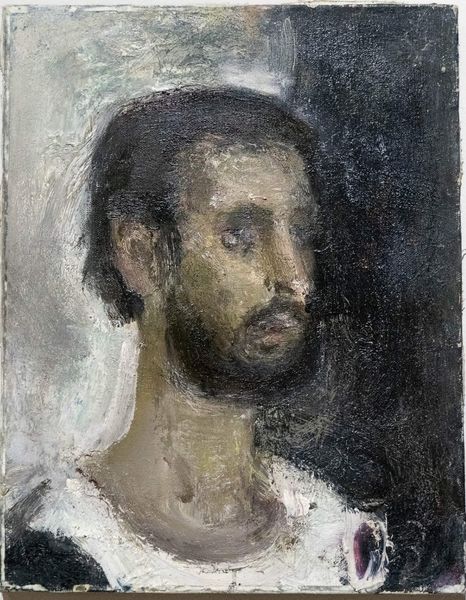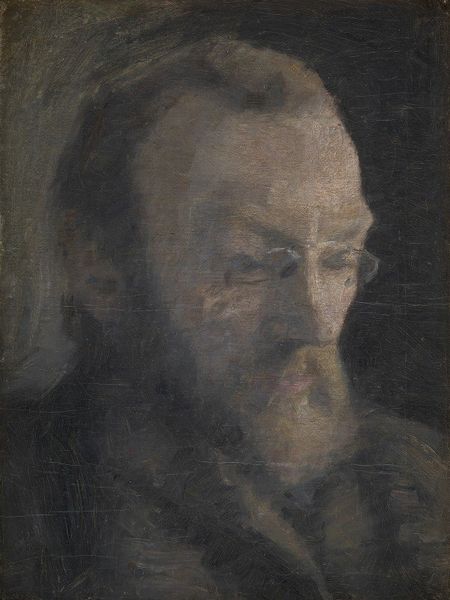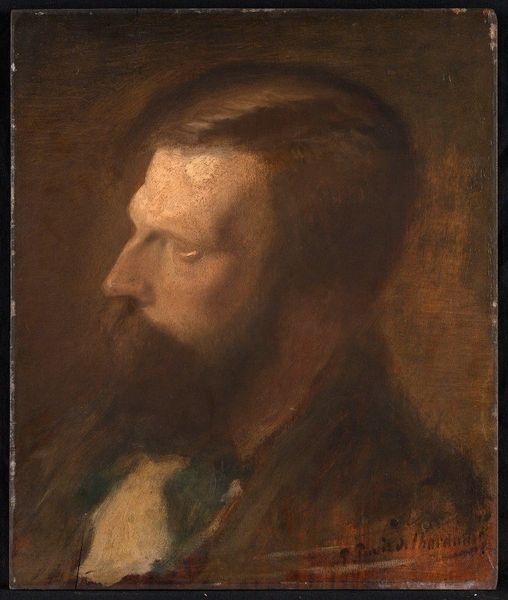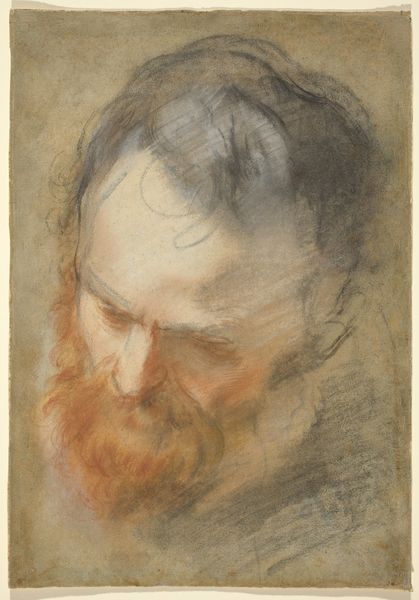
Copyright: Public domain
Editor: This oil painting, "Portrait Du Sculpteur Joseph Osbach," created by Jean-Baptiste Carpeaux in 1874, possesses an almost brooding intensity, don’t you think? The dark palette amplifies the sitter’s solemn expression. What strikes you most about it? Curator: It's fascinating how Carpeaux captures the psychological depth through the use of light and shadow. Consider how the shadowed eyes and prominent beard evoke a sense of internal reflection and perhaps even a touch of the melancholic artist. Do you feel that there’s a conscious mirroring here, perhaps Carpeaux seeing a reflection of himself or the artistic spirit, in Osbach? The heavy impasto application reinforces the palpable presence of the sitter. Editor: That's interesting, the idea of the artist seeing a reflection of himself in the subject. The brushstrokes definitely seem to add to the texture and gravity of the portrait. Was this type of depiction typical of the period, or was Carpeaux forging his own path? Curator: While portraiture of the era often leaned toward idealized representations, Carpeaux's commitment to realism is striking. It signals a move away from pure idealization toward a more earnest portrayal of the individual’s character. He conveys not just likeness, but perhaps the weight of the creative process itself. Look at how the gaze avoids ours; what feelings does this decision convey? Editor: I think it communicates a sense of introspection. Now that I think about it, the averted gaze and the intense shadows do add to this sense of a private, thoughtful moment. Curator: Exactly! It speaks volumes about the romantic notion of the artist grappling with their inner world. The symbols lie not in overt objects, but in the psychological space Carpeaux constructs. Editor: That's a powerful interpretation. It's fascinating to see how Carpeaux uses visual cues to reveal so much about the subject's inner life. I’ll certainly think of portraiture differently now! Curator: And I’ll be considering how Carpeaux perhaps laid bare his own artistic struggles through the careful depiction of Osbach, bridging the gap between artist and subject.
Comments
No comments
Be the first to comment and join the conversation on the ultimate creative platform.
